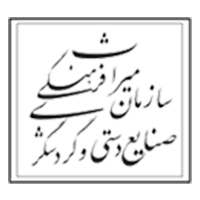showcases
Showcase 1: inscription
The Elamites, like their neighboring states in Mesopotamia, pioneered in writing. Elamite scribes used cuneiform writing system for recording letters, decrees, votive offering lists, workers’ wages, and construction lists. In addition, some texts resembling modern dictionaries have been found from Haft Tappeh; they contain Sumerian vocabularies with their equivalents in Akkadian, Babylonian, and Elamite. Another important type of texts recovered from Haft Tappeh is those called “liver-reading texts.” According to the common tradition of the time, predictions were made by the use of sheep livers and were written down in texts. Lots of information has been extracted from Haft Tappeh texts about people’s names, kings, state officials, months of the year, ceremonies, deities, cities, and temples.

Showcase 2:pre-Elamite
Based on evidence discovered from plenty of sites, northern Khuzestan had been accommodating different ethnic groups over prehistoric periods. One of these sites is the chief mound of Abufanduwa located one kilometer from Haft Tappeh. Abufanduwa finds date back to a timespan extending from the fourth millennium B.C.E. to the Elamite period. Studying such archaeological sites bring about a better insight into the Elamite period and its backgrounds.

Showcase 3:ritual objects
During Elamite period, building temples for various gods and making dedications or offerings for them were totally customary. The temples were built or renovated by the orders of the kings. Abundant objects such as female figurines, beads, and ritual thrones denoting Elamite attitudes toward matters like death, fertility, disease, power and the like have been discovered from the temples.

Showcases 4 and 5: vessels
Making ceramic vessels is one of the earliest human achievements in their daily life. These vessels have been made for containing solid stuff and liquids, storing, and food processing. Investigating their making methods and decorations greatly help archaeologists to well understand each period. Besides ceramic vessels, diverse types of stone and metal vessels have been also made throughout history. Ceramic vessels are considered paramount Elamite objects. They have been produced in various shapes including beakers, bowls, and jars with different functions such as daily usage, storing, and grave ritual objects.

Showcase 6: ornamental objects and weaponry
Throughout the history, human has always been trying to adorn themselves and their surroundings. Such attempts manifest in jewelry remaining from different periods of time including the Elamite period. These objects are composed of pendants in various shapes and material, decorative components of statues, ornaments of daily tools and instruments. Tools are the first manmade artifacts which enabled human to adapt with the environment. These tools were usually made for collecting foods, confronting dangers and self-defense, and were gradually diversified. Over the Elamite period, producing various stone and bronze tools for cutting, scraping, crushing and slicing in the shapes of mace heads, daggers, axes and arrows was prevalent.

Showcase 7: architecture
Architectural remnants of different periods demonstrate lifestyle, beliefs, social circumstances and economy of each society. The ziggurat of Tchogha Zanbil and its dependencies are good examples for such demonstration; they introduce us to the Elamite perception of life and universe. In both sites of Haft Tappeh and Tchogha Zanbil, there are various architectural remains. Different materials such as mud brick, baked brick, bitumen and gypsum, decorative elements like door nails and murals, and diverse techniques including round arches and vaulted spaces all feature the architecture of this period of time.

Showcase 8: burial
Similar to the other cultures of the region, the Elamite culture also believed in the continuance of life after death in the other world. According to the Elamites, the dead would require some stuff introducing them in the afterlife; therefore, they put some objects in the graves beside the corpse. Burial fashion and grave objects accompanying the dead shows their social status, economic conditions, and sometimes political positions.

Showcase 9: post-Elamite
After Ashurbanipal’s assault on the Elamite cities and their destruction, the Elamite kings could never revive their status; since then, they continued ruling in some parts of Khuzestan under trans-regional sovereignties of the Achaemenids, Arsacids, and Sassanians. Many Elamite sites, e.g. Haft Tappeh, were reoccupied after the 2nd millennium B.C.E. during the Sassanian and Islamic eras, which left us lots of artifacts and objects from these time periods.




